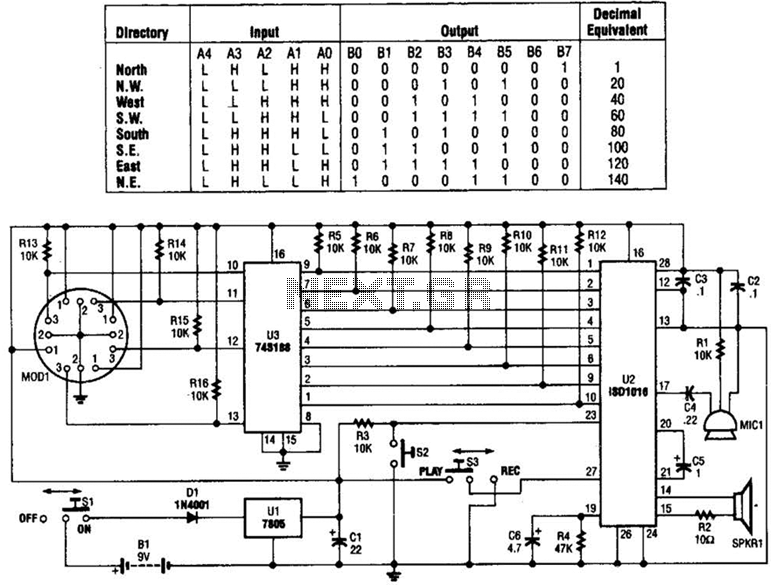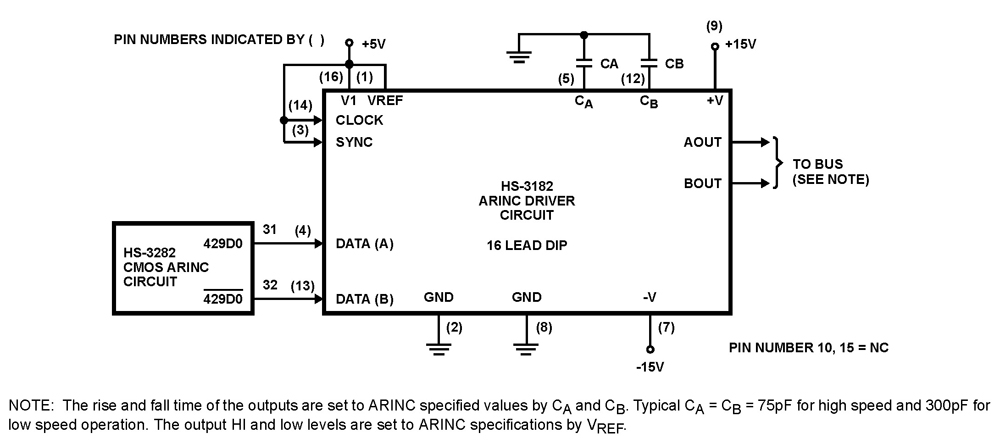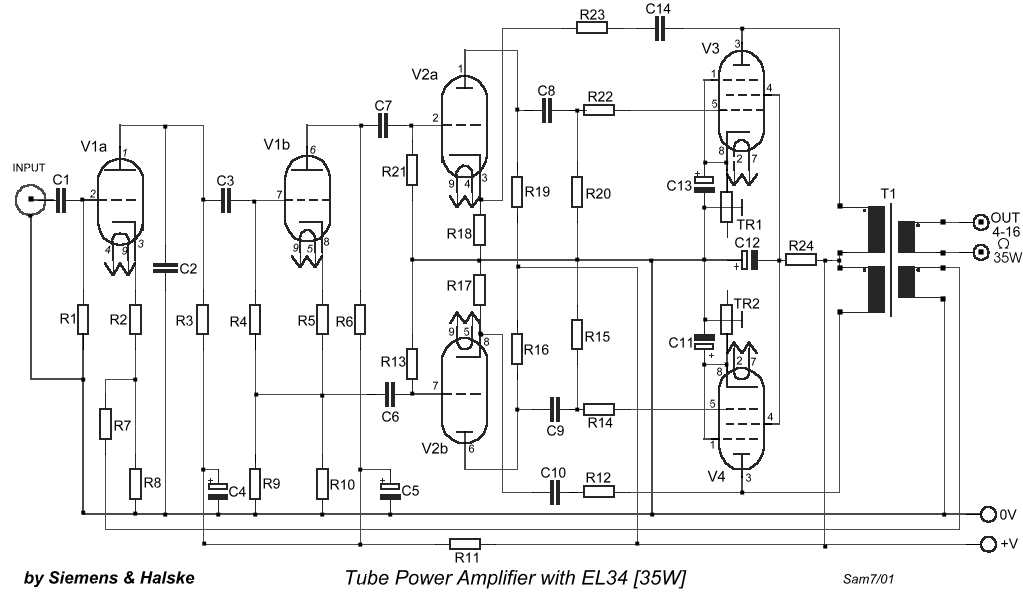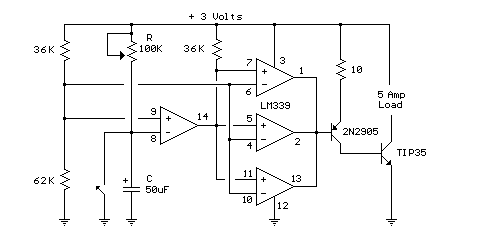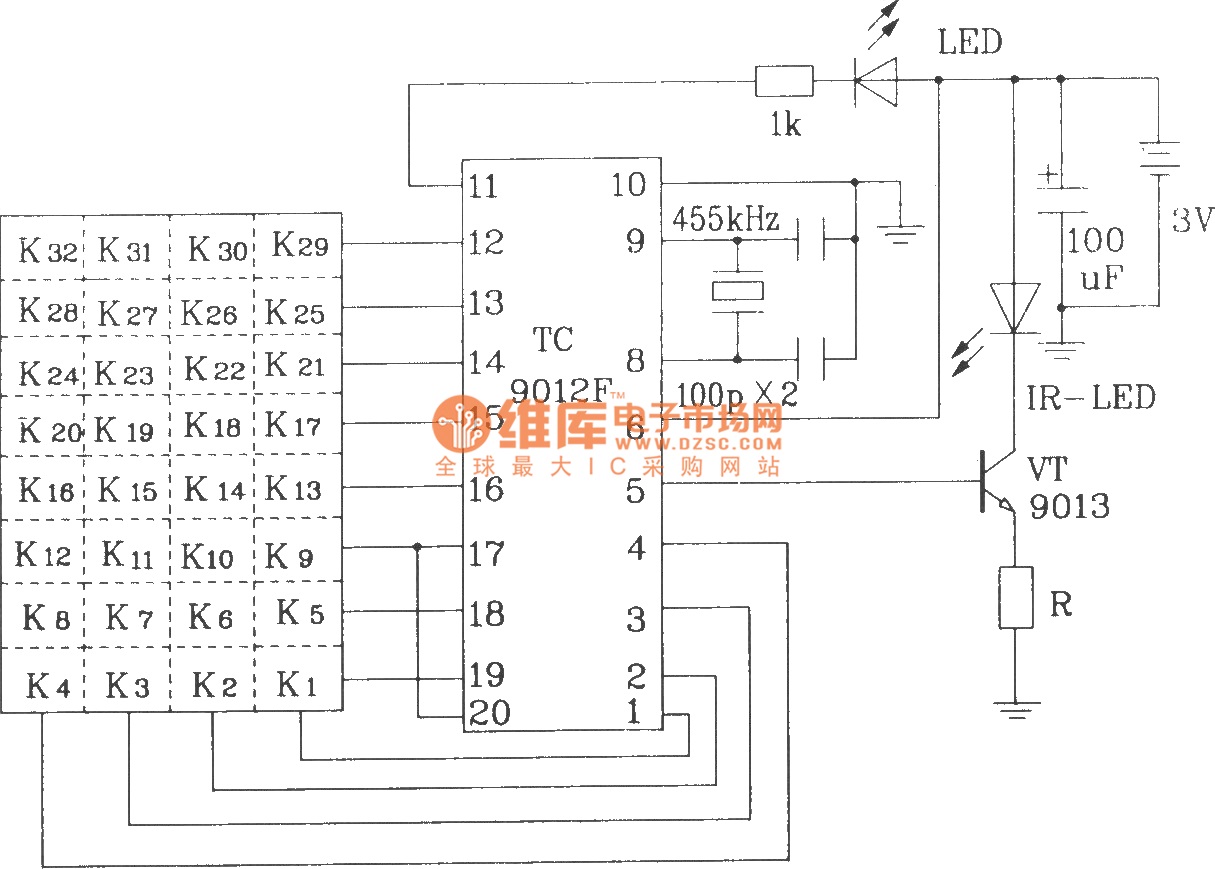
Ambulance sirens circuit

This circuit produces a siren-like sound similar to that of ambulance sirens. Unlike traditional ambulance siren circuits that typically use an IC 555, this design employs transistors, making it more economical and easier to customize. The operation of the circuit can be divided into three main parts: low-frequency production, high-frequency production, and amplification. The low-frequency section consists of Q1, Q2, R2, R3, C2, and C3, which generate a low-frequency output that is then fed into Q3. The high-frequency signal is generated by Q4, Q5, R8, R9, C5, and C6, and the output is directed to the emitter of Q5. This signal is further amplified by Q6 to drive the speakers. Capacitors C1 and C4 serve to filter and smooth the output, while resistor R11 is included to prevent damage to the speaker.
The circuit functions as a siren simulator by utilizing a combination of transistors to generate varying frequencies that mimic the sound of an ambulance siren. The low-frequency production stage employs transistors Q1 and Q2, which work in conjunction with resistors R2, R3, and capacitors C2 and C3 to create a modulating waveform. The output of this section is then fed into transistor Q3, which acts as a buffer to prepare the signal for the high-frequency section.
In the high-frequency production stage, transistors Q4 and Q5 operate alongside resistors R8 and R9 and capacitors C5 and C6 to generate a higher frequency signal. This high-frequency output is critical in achieving the characteristic sound of an ambulance siren. The signal from Q5 is then passed to Q6, which amplifies the combined low and high-frequency signals to a level suitable for driving a speaker.
Capacitors C1 and C4 are strategically placed to filter the output, ensuring that the sound produced is clear and free of unwanted noise. Resistor R11 is included to safeguard the speaker from excessive current, thus preventing potential damage during operation. Overall, this circuit design provides an effective and customizable solution for generating ambulance siren sounds using discrete components rather than integrated circuits.This circuit is a circuit that sounds a siren-like sound of ambulance sirens. This circuit is different to an ambulance siren circuit generally, is to use transistors instead of IC 555. Which allows economical and easy to tailor a network. Operation of the circuit. This cycle can be divided into three main parts is the low frequency production. Pr oduction of high frequency. The amplifier. The manufacture low-frequency includes Q1, Q2, R2, R3, C2, C3. Which will produce low-frequency out and to extend the Q3. Before you sent with high frequency of origin from Q4, Q5, R8, R9. , C5, C6 signal is included, then the output will come out to the leg E of the Q5. and then be expanded with Q6 to drive the speakers. The C1, C4 is intended to stir filter collects them. The R11 will help prevent speaker damage. 🔗 External reference
The circuit functions as a siren simulator by utilizing a combination of transistors to generate varying frequencies that mimic the sound of an ambulance siren. The low-frequency production stage employs transistors Q1 and Q2, which work in conjunction with resistors R2, R3, and capacitors C2 and C3 to create a modulating waveform. The output of this section is then fed into transistor Q3, which acts as a buffer to prepare the signal for the high-frequency section.
In the high-frequency production stage, transistors Q4 and Q5 operate alongside resistors R8 and R9 and capacitors C5 and C6 to generate a higher frequency signal. This high-frequency output is critical in achieving the characteristic sound of an ambulance siren. The signal from Q5 is then passed to Q6, which amplifies the combined low and high-frequency signals to a level suitable for driving a speaker.
Capacitors C1 and C4 are strategically placed to filter the output, ensuring that the sound produced is clear and free of unwanted noise. Resistor R11 is included to safeguard the speaker from excessive current, thus preventing potential damage during operation. Overall, this circuit design provides an effective and customizable solution for generating ambulance siren sounds using discrete components rather than integrated circuits.This circuit is a circuit that sounds a siren-like sound of ambulance sirens. This circuit is different to an ambulance siren circuit generally, is to use transistors instead of IC 555. Which allows economical and easy to tailor a network. Operation of the circuit. This cycle can be divided into three main parts is the low frequency production. Pr oduction of high frequency. The amplifier. The manufacture low-frequency includes Q1, Q2, R2, R3, C2, C3. Which will produce low-frequency out and to extend the Q3. Before you sent with high frequency of origin from Q4, Q5, R8, R9. , C5, C6 signal is included, then the output will come out to the leg E of the Q5. and then be expanded with Q6 to drive the speakers. The C1, C4 is intended to stir filter collects them. The R11 will help prevent speaker damage. 🔗 External reference
Warning: include(partials/cookie-banner.php): Failed to open stream: Permission denied in /var/www/html/nextgr/view-circuit.php on line 713
Warning: include(): Failed opening 'partials/cookie-banner.php' for inclusion (include_path='.:/usr/share/php') in /var/www/html/nextgr/view-circuit.php on line 713
